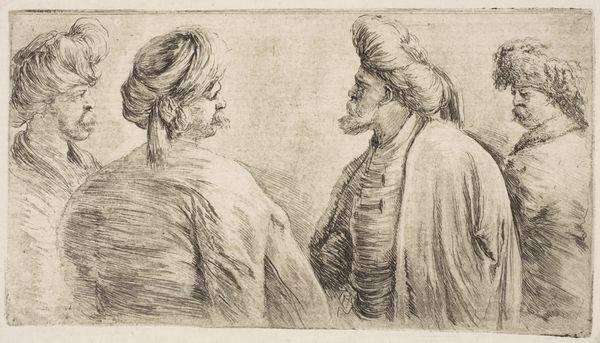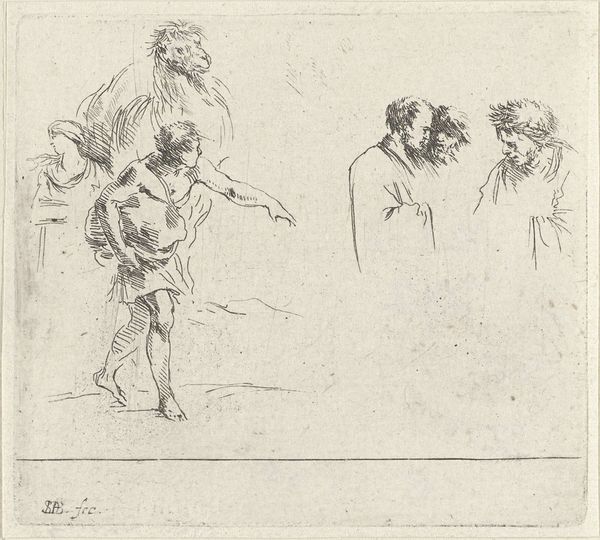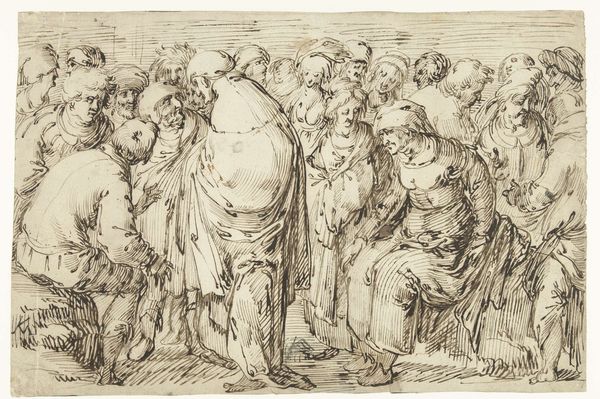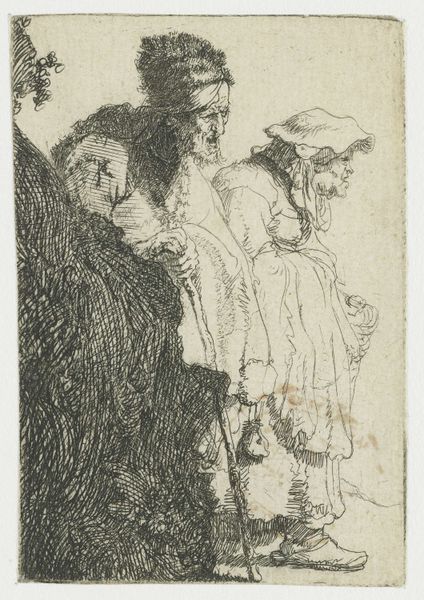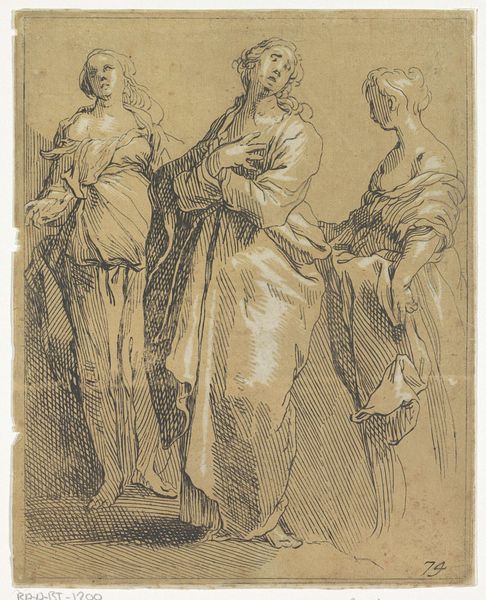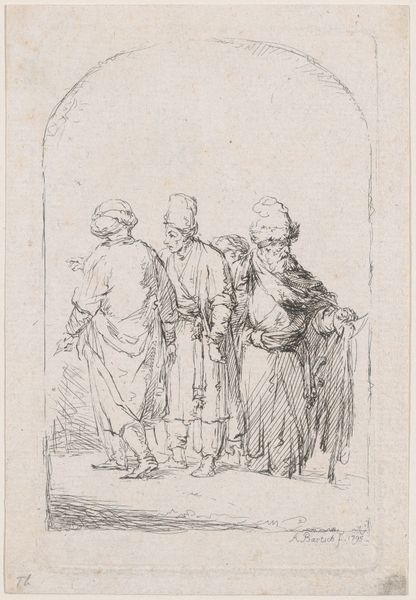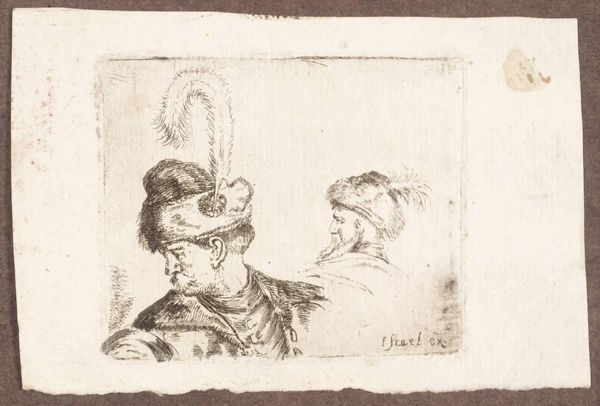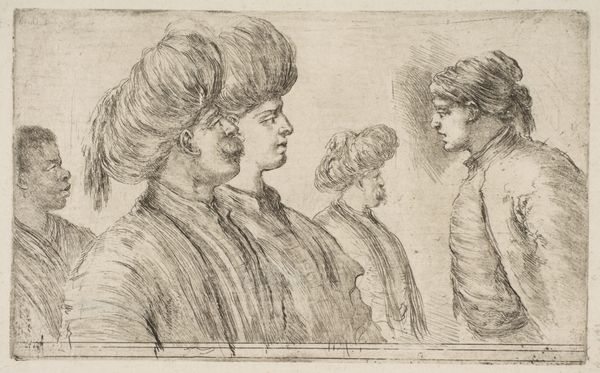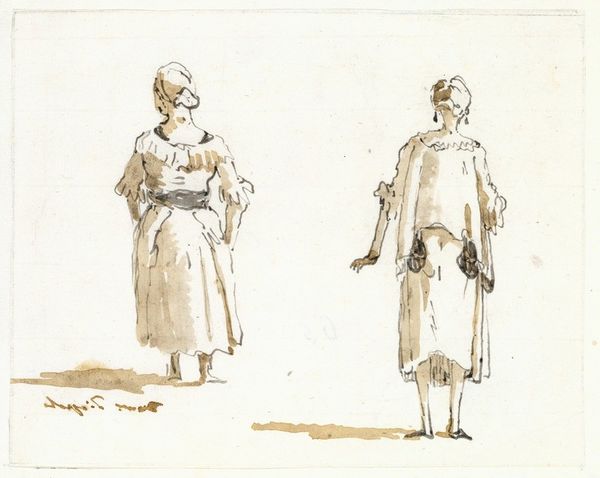
Drie Hongaarse mannen met snorren waarvan twee op de rug gezien 1620 - 1664
0:00
0:00
stefanodellabella
Rijksmuseum
drawing, paper, ink
#
portrait
#
pencil drawn
#
drawing
#
baroque
#
pencil sketch
#
charcoal drawing
#
paper
#
ink
#
pencil drawing
#
group-portraits
#
pencil work
Dimensions: height 71 mm, width 109 mm
Copyright: Rijks Museum: Open Domain
Editor: So, this is Stefano della Bella’s “Three Hungarian Men with Moustaches, two seen from the back,” made sometime between 1620 and 1664, using ink on paper. It’s at the Rijksmuseum. It’s such a delicate sketch; almost feels like we are intruding on a private moment. How do you interpret this work, especially given its historical context? Curator: Well, this drawing offers us a fascinating glimpse into the construction of identity and otherness in 17th-century Europe. These aren't simply portraits, but rather representations of cultural encounters. The emphasis on their moustaches and attire, markers of Hungarian identity, raises questions about how Europeans perceived and categorized those different from themselves. Do you notice how the figures are positioned? Editor: Yes, two are seen from the back, and the other faces away. It's not exactly the heroic pose of official portraiture... more like a study. Curator: Precisely. It speaks to the power dynamics at play. Were these commissioned portraits, or ethnographic studies? Think about the role of the artist, the "gaze," and the construction of the "other." How does della Bella's depiction reinforce or subvert existing stereotypes about Hungarians at the time? And consider what "Hungary" even signified in that period. Editor: That’s a really different way to look at it, I hadn't considered those issues of power and representation. It challenges me to see beyond the surface and ask tougher questions about cultural exchange and the artist's role. Curator: Exactly. By exploring art through an intersectional lens, we start to see the narratives of identity, race, and power embedded within them. The drawings of "exotic" others during the colonial era carry the baggage of the era. Editor: I never thought I'd be grappling with feminist theory looking at 17th-century drawings of men's facial hair!
Comments
No comments
Be the first to comment and join the conversation on the ultimate creative platform.
